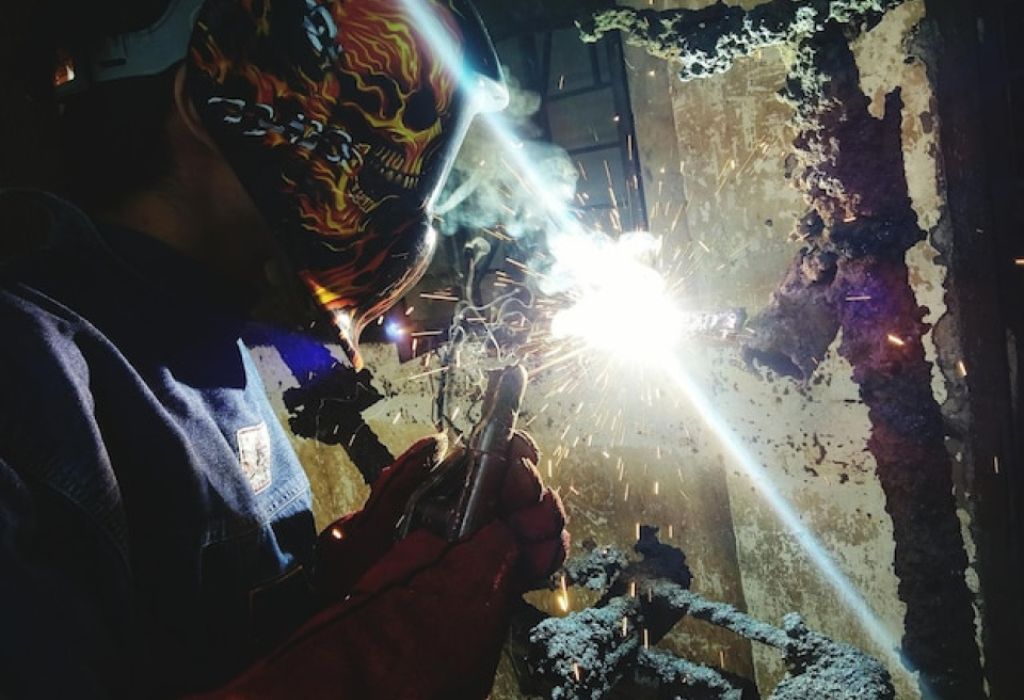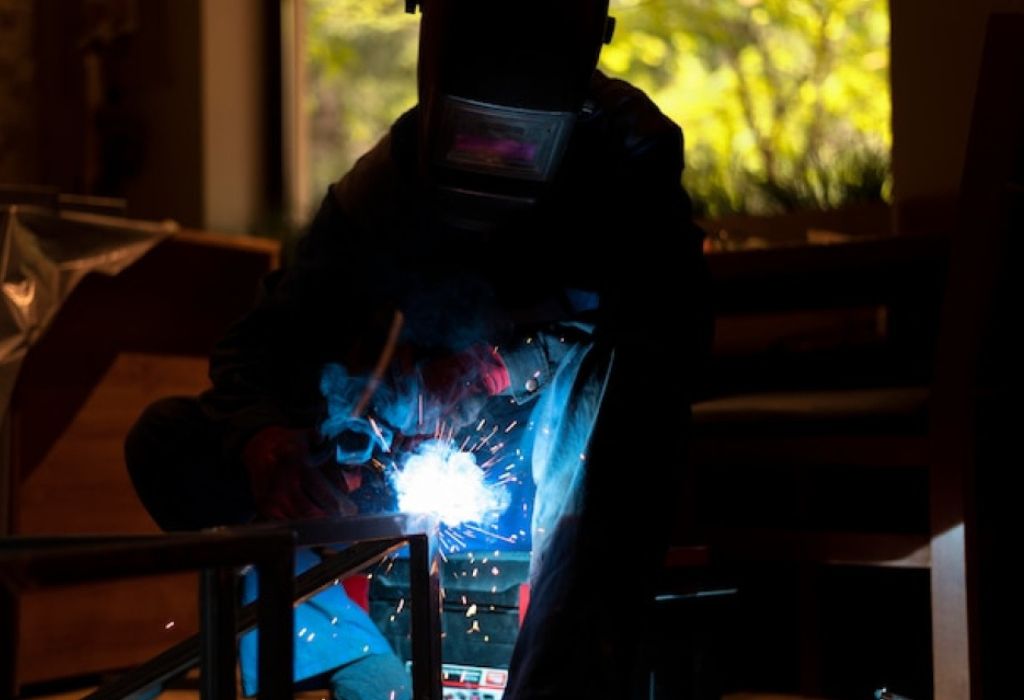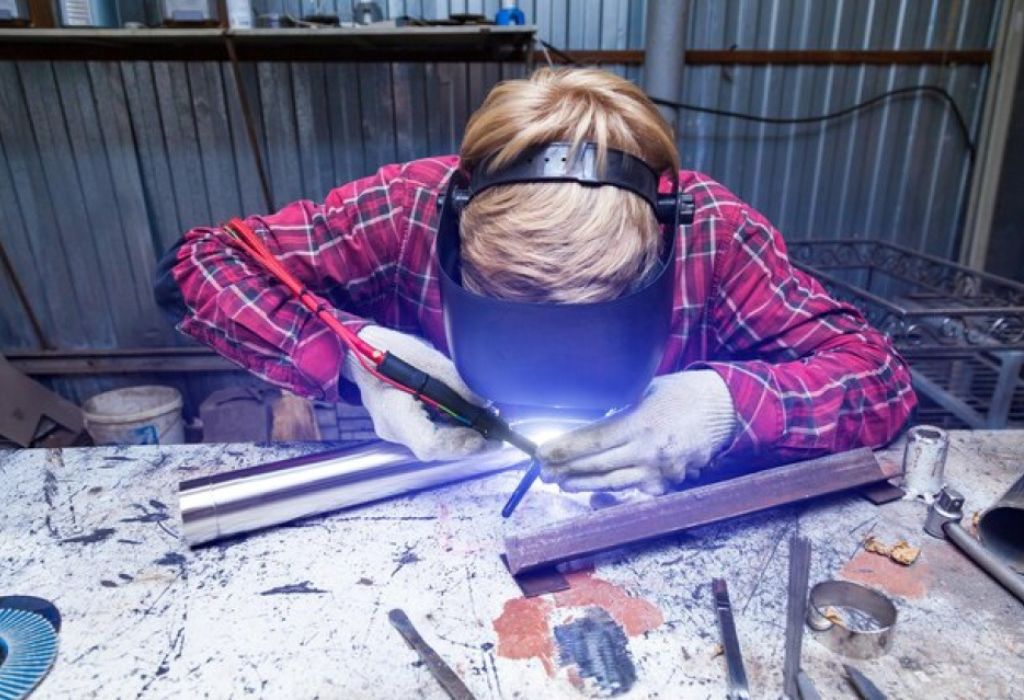The bell door seals and the heliox hiss fades as the team drops toward a shadowed pipeline. Two hours of work stretch ahead, and the chamber life waiting above feels a world away.
Pay rumors swirl louder than the compressors on deck. The question that matters is simple and specific—how much does a saturation welder make on real vessels and real rotations.
Saturation diving keeps crews living at pressure so they can maximize bottom time and decompress only once at the end. This is why offshore contractors price work with day rates, depth pay, bell bonuses, and decompression day percentages rather than simple hourly wages. Wikipedia
Across broad U.S. job data, the average for “saturation diving” roles is about $123,299 per year or roughly $59 per hour, which is a useful baseline before add-ons move totals up or down. These figures come from aggregated postings and do not include many offshore extras. ZipRecruiter
In the North Sea, career profiles report experienced saturation divers earning £1,500 a day or more, which can push annualized pay dramatically when project days stack up. Regional markets, vessel class, and certification level quickly change the math. Planit Plus
This guide maps the real levers behind earnings with clear examples, short Q&As, and trusted sources. By the end, the phrase how much does a saturation welder make will have a grounded answer tied to rotations, credentials, and market cycles.
What Is a Saturation Welder and Why Pay Is Different

Saturation welding is commercial diving at ambient pressure where divers live at depth for days or weeks in a dry habitat and commute to the job site by closed bell. Once tissues are saturated with inert gas, decompression time does not increase with longer stays, so teams decompress once at the end. Wikipedia
This method greatly increases productive bottom time and reduces repeated decompressions across a hitch. It also demands complex life-support systems, heliox atmospheres, and strict procedures that help explain higher compensation. Wikipedia
Quick Q&A
What does “saturation” actually mean?
Tissues absorb inert gas until equilibrium with the habitat pressure, after which required decompression is essentially fixed. Wikipedia
Why use heliox instead of air?
Helium reduces narcosis and breathing resistance at depth, enabling longer, safer bell runs. Wikipedia
Why do sat divers wear hot-water suits in cold regions?
Helium conducts heat rapidly, so hot-water systems help prevent dangerous heat loss. Wikipedia
Is decompression sickness common in modern sat operations?
Incidence in well-run programs since 2000 has been reported as very uncommon. Wikipedia
Does this setup change how pay is calculated?
Yes, most contracts are built on day rates plus bonuses rather than simple hourly pay.
How Much Does a Saturation Welder Make in 2025
The short answer many readers want is a number. Typical sat diver day rates are about $1,000–$1,500+ in busy markets, with annual totals for experienced personnel commonly falling between $150,000 and $300,000+ depending on days worked and add-ons. These directional figures align with industry write-ups and career data. Planit Plus+1
For a broad national benchmark, aggregated postings for “saturation diving” list about $123,299 per year. Treat this like a starting point because it often excludes depth pay, bell run bonuses, and per diem that many offshore welders receive. ZipRecruiter
Some career guides note that top saturation divers can exceed $300,000 with years of experience and heavy project calendars. Exceptional outliers will always exist, but the realistic ceiling usually depends on rotations, region, and whether decompression days pay at full or partial rates. Tallo
Is pay hourly or daily offshore?
It is mostly day rate based with bonuses layered on top.
What is a realistic annual range for experienced sat welders?
Roughly $150,000–$300,000+ when projects and add-ons are strong. Tallo
What broad U.S. average can be used as a baseline?
Around $123,299 per year for “saturation diving” roles. ZipRecruiter
Are North Sea rates often higher?
Yes, £1,500 per day or more appears in UK guidance for experienced saturation divers. Planit Plus
Do decompression days pay full rate?
Many contracts pay a percentage of the day rate, but terms vary by contractor.
The Pay Structure: Day Rate, Depth Pay, Bonuses, Per Diem
Most sat welders are paid per on-hire day, which includes work days, bell runs, and decompression days counted by contract. Depth pay scales as depth increases, and some projects add a bell run bonus for each lockout. dtmag.com
Contracts may also include standby rates, travel allowances, and per diem, which can be tax-advantaged depending on jurisdiction. These extras swing totals when rotations are long and travel is frequent. dtmag.com
H3: What Depth Pay Looks Like
Depth pay is commonly quoted per foot for air or mixed-gas work and grows with depth, while saturation work commands higher incentives due to risk and complexity. Exact ladders are contractor specific, but they act as meaningful multipliers when projects go deep. dtmag.com
What is depth pay in plain terms?
An extra amount per foot or per depth band added to the day rate for deeper work. dtmag.com
What is a bell run bonus?
A fixed payment per lockout from the bell to compensate for high-intensity work periods.
How are decompression days paid?
Often at a partial day rate, though some contracts approach full rate on long decos.
Do per diem and travel matter?
Yes, they can significantly change net income and effective tax.
Why are figures quoted per day and not per hour?
Sat operations run in shifts within a continuous 24-hour system, so day-based pricing fits better than hourly accounting.
Factors That Change How Much a Saturation Welder Makes
Region plays a huge role because rates trend higher in the North Sea and in specialized vessels that handle deep construction work. The Gulf of Mexico and Asia Pacific show wider spreads driven by vessel supply, project type, and seasonality. Planit Plus
Certifications and skills add leverage, including IMCA or HSE recognized closed-bell qualifications, HUET or BOSIET, and habitat welding proficiency with TIG and MMA processes. Extra NDT tickets also expand the tasks a diver can bill. imca-int.com+2imca-int.com+2
H3: Rotation and Utilization
Annual totals are a function of paid days × day rate, so utilization matters as much as the sticker day rate. Long hitches with short gaps elevate income quickly, while long breaks between vessels can pull totals down.
Where do the highest day rates appear most often?
Historically in the North Sea on complex deep water projects. Planit Plus
Do extra tickets really move pay?
Yes, IMCA/ADCI recognition and BOSIET/HUET often unlock higher-paying mobilizations. imca-int.com+2adc-int.org+2
Does depth always increase earnings?
Generally yes via depth pay, though availability and risk also factor. dtmag.com
Do cold climates influence compensation?
Operations in cold water with heliox and hot-water suits bring higher complexity that can support higher rates. Wikipedia
Can two divers on the same vessel earn different totals?
Yes, due to role, qualifications, bell time, and how decompression days are compensated.
Pathway to Saturation: Training and Certifications

Most sat welders start as welders or riggers, complete commercial dive school, build hours as air or mixed-gas construction divers, and then move into closed-bell saturation roles when selected. Industry bodies such as IMCA and ADCI set training recognition and competency frameworks used by major contractors. imca-int.com+1
ADCI’s International Consensus Standards and certification program identify levels for commercial divers, life-support technicians, and saturation technicians. Employers often require proof of training hours and an up-to-date diver medical. adc-int.org+1
H3: Mandatory Offshore Safety Courses
Offshore roles usually require BOSIET and HUET, which cover safety induction and helicopter escape procedures. These OPITO-recognized standards are widely requested during onboarding. OPITO+1
Can a topside welder jump straight into sat?
It is rare, since most teams promote experienced offshore divers into the bell. Professional Diving Centre
Which credentials carry the most weight globally?
IMCA and HSE recognized closed-bell qualifications plus BOSIET/HUET and a current diver medical. imca-int.com+2imca-int.com+2
How many training hours does ADCI expect for entry?
ADCI references 625 hours of formal training for commercial divers as part of its carding requirements. adc-int.org
Is life-support technician a good stepping stone?
Yes, LST roles deepen system knowledge and can support supervisor pathways. IMCA Web
Do inspection tickets raise earnings?
NDT qualifications broaden task lists and often improve day-rate offers.
Risks, Lifestyle, and Why the Pay Is High
Saturation diving concentrates risk into long periods living at pressure, so teams rely on stringent procedures, redundancy, and continuous monitoring. The method reduces decompression sickness risk across a hitch, but it introduces unique hazards of confinement and emergency response. Wikipedia
The lifestyle is demanding, with hot-water suits, heliox voices, and weeks in a chamber away from family. Incidents are rare but memorable, and modern systems aim to minimize exposure with rigorous design and supervision. Wikipedia
Is DCS less common in sat than in repeat bounce diving?
Yes, because teams decompress once at the end under strict schedules. Wikipedia
Why are voices high-pitched on comms?
Helium changes timbre, so unscramblers are used to normalize speech. Wikipedia
Why the premium pay?
Specialized training, long hitches at pressure, and high-value subsea work justify higher rates.
How are emergencies handled offshore?
Diving support vessels follow IMCA guidance and carry contingency equipment for bell and chamber incidents. IMCA Web
Is the career long term for most?
Many pivot to inspection, life-support, or supervision after years in the water.
2025 Market Outlook and Hiring Hotspots
Demand is supported by oil and gas maintenance, subsea tie-backs, decommissioning, and offshore wind foundation work. Limited supply of qualified sat divers helps sustain higher rates during busy seasons.
UK and Northern Europe continue to feature strong day rates, and U.S. Gulf projects create periodic windows of high utilization. National occupational data for commercial divers shows solid wages that rise further in offshore sat roles which add bonuses on top. Planit Plus+1
Will offshore wind need sat teams?
Yes, cable routes, foundations, and repairs create ongoing subsea tasks.
Does oil price still move the market?
Capital cycles influence new construction and IRM workloads across regions.
Are big contractors safer choices for steady income?
Larger operators often have steadier vessel access and more standardized pay scales.
Do visas and travel speed matter?
Fast mobilization options help workers catch premium vessels and urgent projects.
Is it realistic to plan for 120–150 paid days a year?
UK guidance uses similar figures for offshore divers, which aligns with many rotations. Planit Plus
How To Maximize Earnings as a Saturation Welder

Invest in closed-bell certifications recognized by IMCA or HSE, keep BOSIET/HUET current, and maintain an impeccable safety record. Cross-train in habitat welding, TIG/MMA, and NDT to be the diver supervisors call first. imca-int.com+1
Manage availability and references so you can step onto short-notice mobilizations, especially in the North Sea. Document bell runs, weld quals, and vessel types to strengthen rate negotiations with proof of capability.
Which add-on skill pays back fastest?
Habitat welding and NDT tickets usually create immediate leverage in bidding.
Does vessel class matter?
Dynamic-positioning construction vessels handling deep water work often carry higher budgets.
How do you get selected for sat from air work?
Strong offshore performance, supervisor referrals, and formal closed-bell training open doors. Professional Diving Centre
Do clean medicals and fitness help rates?
They help you stay deployable, which is vital in tight project windows.
Should you track every lockout and weld?
Yes, detailed logs help justify higher day-rate offers. adc-int.org
Alternatives and Next Steps
Some welders shift into Life-Support Technician, Diving Supervisor, Client Rep, Inspection roles, or ROV pilot/tech to extend careers and stabilize schedules. These pathways lean on sat experience while reducing time in the water. IMCA Web
Inland hyperbaric or inspection careers can also pay well with the right credentials and local demand, though headline rates tend to trail deep offshore saturation work. Career data for underwater welding shows competitive averages with upside for experienced specialists. Tallo
Is supervision usually more stable?
Yes, it shifts from in-water work to leadership and planning on deck. IMCA Web
Do inspectors travel less?
Travel varies, but inspection routes can mean shorter hitches or nearer-shore projects.
Is ROV work less physical?
Generally yes, but it introduces intense technical and operational responsibilities.
Can inland roles hit six figures?
Senior inland and inspection positions can, depending on region and specialty. Bureau of Labor Statistics
Will sat experience help outside diving?
System knowledge and safety culture transfer well to many offshore roles.
Conclusion
So how much does a saturation welder make in 2025. Directionally expect $1,000–$1,500+ per day, with experienced annual totals frequently in the $150,000–$300,000+ band when rotations are strong and bonuses stack. A broad U.S. benchmark of about $123,299 per year offers a baseline before depth pay, bell run bonuses, and per diem lift totals. Planit Plus+2Tallo+2
The fastest path upward is clear credentials, safe bell discipline, in-demand skills, and regions where complex deep water work is active. Focus on recognized training, utilization, and project mix, then negotiate with logs and references rather than hype.

I’m Darrell Julian, the founder, lead writer, and hands-on welding enthusiast behind ArcWeldingPro.com. With more than 15 years of real-world welding experience, I created this platform to share what I’ve learned in the field, in the shop, and in the heat of the arc.


